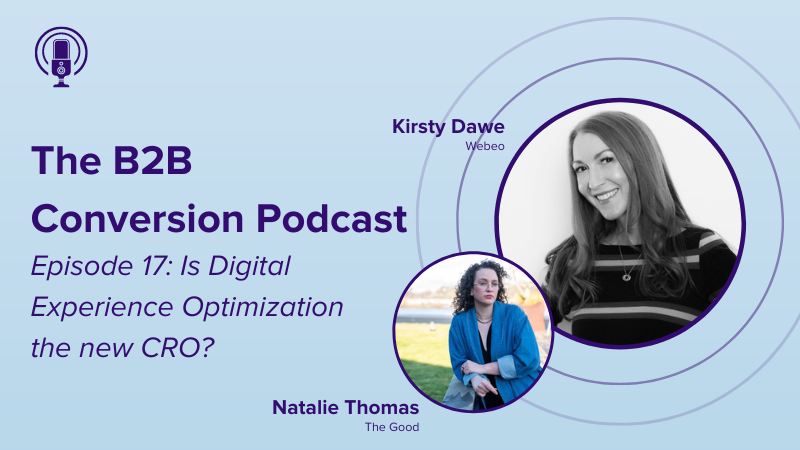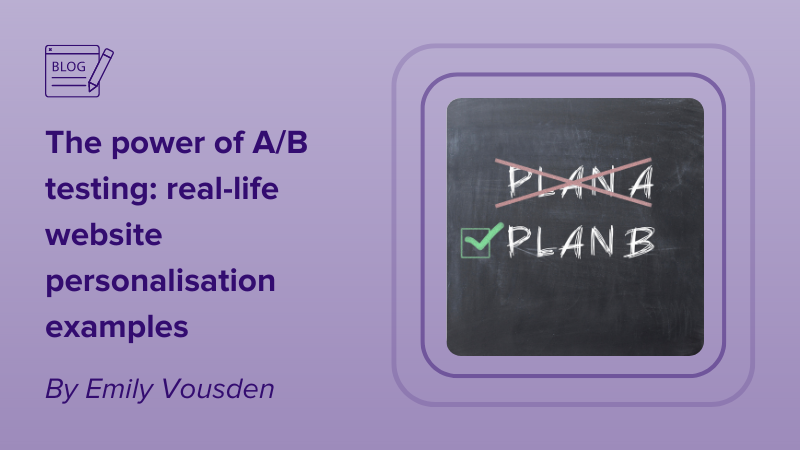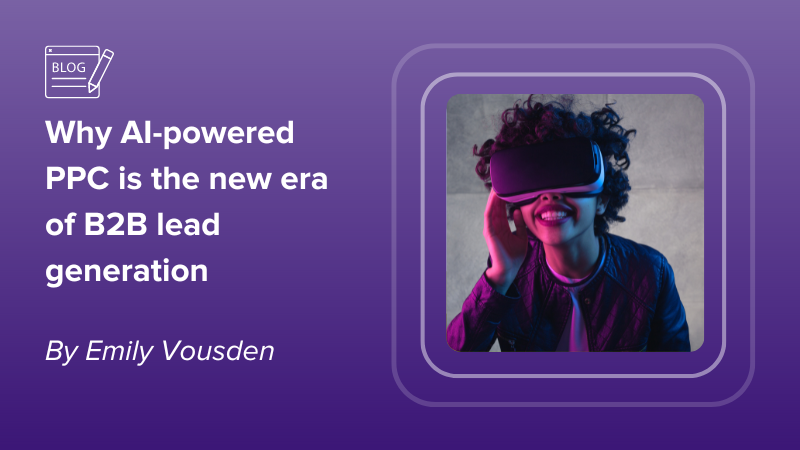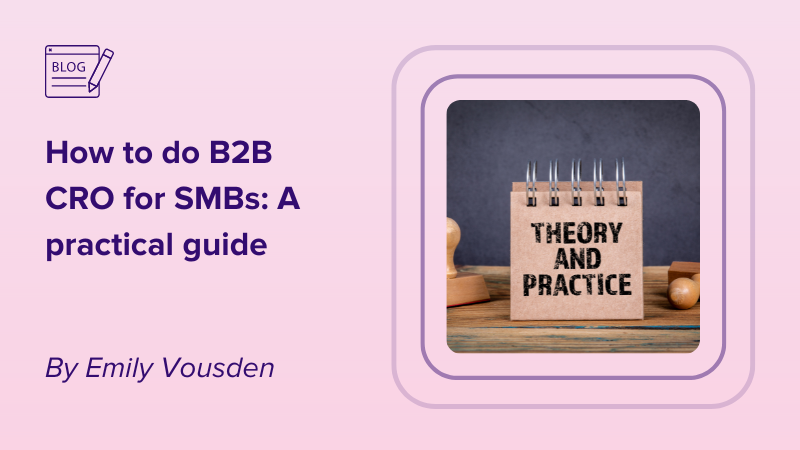With the average B2B website converting at 2% there’s a huge gap between time and money spent attracting visitors and these visitors converting. This is a big problem for what’s arguably your most important channel. Think about it, it’s pretty much a guarantee that buyers will visit your website before enquiring with you or speaking to a salesperson. In B2B, the sales cycle is longer with multiple people in the ‘buyer committee’. So, there’s more opportunity for your website to deliver the shared outcome of being helpful to your buyers and generating your business opportunities with the right people at the right time. For this reason, continuously optimizing your website to convert at a higher rate is crucial.
AB testing and web personalization are two popular CRO strategies, each with its own set of pros and cons. In this blog post, we’ll look at the advantages and drawbacks of AB testing and compare them to the benefits and challenges of web personalization.
Pros of AB Testing in B2B:
Data-driven decision-making:
AB testing provides B2B marketers with a data-driven approach to decision-making. By testing variations of web elements, marketers can uncover insights into what resonates most with their buyers. This approach helps to facilitate informed adjustments to improve user experience and engagement. Moving the conversation away from subjective views within a company.
Targets every visitor:
AB testing allows you to target every visitor to your website, providing a broad scope for experimentation. This means you can analyze the impact of changes on a broad audience.
Easy setup:
Setting up an AB test is relatively straightforward, and many platforms offer free account options for getting started with simple AB tests. This allows teams with limited budgets who want to move away from ‘gut-feel’ decision-making. They can quickly implement and run tests without significant investment.


Businesses with over $1bn revenue see the most success with AB testing
Cons of AB Testing:
Limited segmentation for B2B:
A well-known challenge for B2B marketers using AB testing is the limitation in segmentation. Tailoring tests to specific industries, company sizes, or other firmographic criteria can be challenging, potentially resulting in less granular insights.
Focus on single pages:
AB testing typically focuses on individual pages rather than the entire user experience. Most people focus on the homepage and overlook broader issues affecting the overall website performance. This is also true when you overlay longer sales cycles in B2B and the need to optimize for more intricate conversion paths.
Time-consuming:
Running comprehensive AB tests takes time especially in B2B where the traffic volumes are lower than B2C e-commerce sites. The time-intensive nature of AB testing can be a barrier to achieving continuous improvement. Also knowing where to invest your time can be a barrier with marketers. With numerous elements contributing to website performance, deciding where to focus initial AB testing efforts can be overwhelming. It’s also worth noting that only 12% of experiments win the primary metric so for small teams this can be a lot of work for limited reward.


12% of experiments win the primary metric
Size matters:
Larger businesses have the edge when it comes to seeing success from A/B testing. According to a recent report from Optimizely stated that companies with over $1bn of revenue were not only able to launch more experiments but also achieved higher experiment win rates as well. For businesses that fall short of this revenue and have less annual traffic to their site will have to wait longer for their tests to reach statistical significance and may not have the resources to run the same volume of tests.
Limited resources for B2B marketers:
B2B marketers using AB testing may find a lack of resources and best practices tailored specifically to their needs, making it challenging to optimize effectively within their space.
The key to success when initiating AB testing for B2B websites is to establish a clear understanding of the website’s current state. Have clearly defined objectives about what you’re measuring and prioritizing high-impact areas such as your most visited pages and pages with the highest drop-offs.
Experimentation is a journey. Start small, learn, and steadily evolve your optimization strategies with a long-term view for gains.
Let’s now explore B2B web personalization, a powerful way to enhance user experience through highly relevant and helpful experiences for buyers and customers. Here are the advantages and challenges of implementing personalized experiences on B2B websites.
Pros of B2B Web Personalization:
Enhanced user experience and increased conversion rates:
Personalization allows B2B websites to cater to individual user preferences even if you target a broad audience. A relevant, helpful experience can significantly impact engagement and conversion particularly when you overlay firmographic data such as industry, company size and location.
Pipeline acceleration:
By presenting personalized content, social proof, and call-to-actions, B2B websites can effectively guide buyers through the sales funnel. Showing the right content to the right people at the right time. This can result in buyers moving faster through the funnel through a combined digital and sales-led experience.
Better Account-Based Marketing (ABM):
B2B web personalization is often the missing piece in the Account-Based Marketing (ABM) puzzle. Tailoring content and experiences to your target accounts when they visit your website rather than a stand-alone landing page can strengthen relationships across the buying committee and improve the effectiveness of targeted marketing efforts across all channels.
Data-driven insights:
Personalization relies on data analysis and testing, providing valuable insights into user behavior, preferences, and engagement patterns. This data-driven approach enables marketers to refine their CRO strategies based on real-time information specific to their ICP audience.
Cons of B2B Web Personalization:
Perceived implementation complexity:
A common barrier in deploying effective B2B web personalization is that it will be complex and resource intensive. Some tools involve integrating advanced technologies and tools. The good news is there are plug-and-play solutions out there (such as Webeo!) that remove the complexity completely.
Understanding the audience:
B2B audiences often have specific needs, and pinpointing the exact pain points or buying preferences can be challenging. Particularly if you have a broad target audience across multiple industries or business sizes. Without a deep understanding of the target audience, crafting experiences that resonate can seem like a difficult task.
Risk of over personalization:
While personalization is beneficial, there’s a risk of overdoing it and getting lost down the rabbit hole with limited impact on engagement and conversion rates. Best practice is to start wide, personalizing to a broad audience and then go deep once you’ve started to see results and captured visitor data to make informed decisions that will drive the highest results.
Taking this into account we must acknowledge that there’s a real need for our B2B websites to get to the point faster for buyers that are time-poor and looking to do more of their research and buying online rather than having to book a demo or speak to sales. The key question to ask yourself is do I want to drive conversion with all traffic or focus my effort on converting my most valuable traffic. Web personalization gives you the ability to understand how ICP traffic is behaving onsite and then create a highly personalized experience to the right people at the right time.
I’m pleased to report that you can cost-effectively adopt B2B website personalization and AB testing very easily with limited resources required. When speaking to potential vendors here are some important questions you should be asking:
- Do they offer AB testing & website personalization?
- What integrations do they have with CRM/MAP and intent platforms? How big a lift is setting up the integration?
- Is the solution inclusive of data such a firmographic/IP database. This is essential to personalize and test your unknown web visitors and dynamically deliver the right content at the right time.
- Do they offer professional services? Not just training and onboarding but can they manage the whole process for you? Including setup and building out the experiments and experiences for you to get you up and running and seeing results quicker.
If you’d like to find out more about Webeo and see real-life use-cases and benchmark data for your industry please get in touch, we’d love to hear from you.




